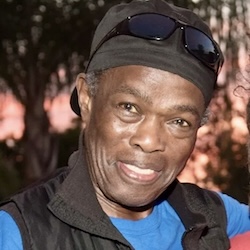 Lawyer Johnson (Photo: Witness to Innocence) Convicted of first-degree murder in Boston, Massachusetts, in 1972, Lawyer Johnson was sentenced to death. After a new trial, he was convicted of second-degree murder in 1974. Johnson was exonerated after serving ten years in prison when an eyewitness, who was a child at the time of the crime, came forward to identify the actual killer. On December 7, 1971, James Christian, a white man in a predominantly black neighborhood, was murdered on the steps of a housing project in the Roxbury section of Boston. Gary Pritchett, a social worker, stopped Kenneth Myers as he fled along with two other black men whom Pritchett did not recognize. A witness identified Kenneth Myers and the two other men fleeing the scene. Pritchett did not believe that either of the men was Johnson, whom he knew. Known to the police for his prior record, Myers was the only suspect taken into custody that evening. Myers conceded his presence at the scene and at first identified the shooter as Vaughn Simpkins. When investigators discovered that Simpkins was in prison, Myers named Lawyer Johnson as the shooter. A week later, Lawyer Johnson, a twenty-year-old black man, was arrested and charged with committing the murder. In June 1972, a Suffolk County jury found Johnson guilty of first-degree murder and sentenced him to death by electrocution. The prosecution’s case hinged on the testimony of Myers and that of Alvin Franklin, an inmate who claimed that Johnson confessed to him during recreation time at the prison. However, Franklin later admitted upon cross examination that it may have actually been Myers, with whom he briefly shared a jail cell, who told him that Johnson had killed Christian. Gary Pritchett could not be found for this trial. Myers refused to identify two potential witnesses to the crime – one of the alleged participants and Myers’ girlfriend – and the court did not compel his testimony. In July 1974, Johnson was granted a new trial based on Myers’ withholding of the names of material witnesses. Although Pritchett testified for Johnson in the second trial, Johnson was again found guilty, this time of second-degree murder. Jury selection played a pivotal role in the new trial: the prosecutor struck all potential black jurors and all jurors who expressed sentiments indicating that race would not affect their judgment. After a trial that took place just weeks after the start of the desegregation of Boston public schools by busing, an all-white jury sentenced Johnson to life in prison. In late 1980, Dawnielle Montiero, who had witnessed the crime as a ten-year-old, came forward. Montiero said she called to report the crime at the time, but the police told her she was too young to be of assistance in the investigation. Montiero knew Myers, who had a bad reputation in the neighborhood. At a hearing in 1981, she testified that she witnessed him shoot the victim in the head at close range on her way home from the store. Montiero also knew Johnson, and she testified that he was not at the scene. Based on Montiero’s testimony, Judge Eileen P. Griffin ordered a new trial, and Johnson was released on bail. In October 1982, the Commonwealth of Massachusetts moved to dismiss all charges against the thirty-year-old Johnson, vacating his conviction after more than a decade. I
n 1983, the Massachusetts legislature initially approved a special bill providing $75,000 compensation for Johnson, but this measure was not enacted into law. In December 2005, Massachusetts legislators, inspired in part by Johnson’s case, enacted a law providing up to $500,000 in compensation for wrongfully convicted individuals who could prove they were innocent. However, this law required proof of innocence by clear and convincing standards – a higher standard than for other civil trials. For claims with no DNA evidence, this was a particularly difficult standard to meet.
In early 2006, Johnson filed one of the first claims under the new statute for the years of freedom he had lost and for other personal and emotional damages because of his incarceration. With no DNA, gathering evidence thirty-five years after his wrongful prosecution posed challenges to meeting this high standard of proof. Johnson found he could not prove his innocence by clear and convincing evidence. Therefore, in late 2006, Johnson agreed to settle his civil suit for $275,000. Johnson received the final settlement payment in June 2007 at the age of fifty-five. He died in 2022. – Researched by Carling Spelhaug
|